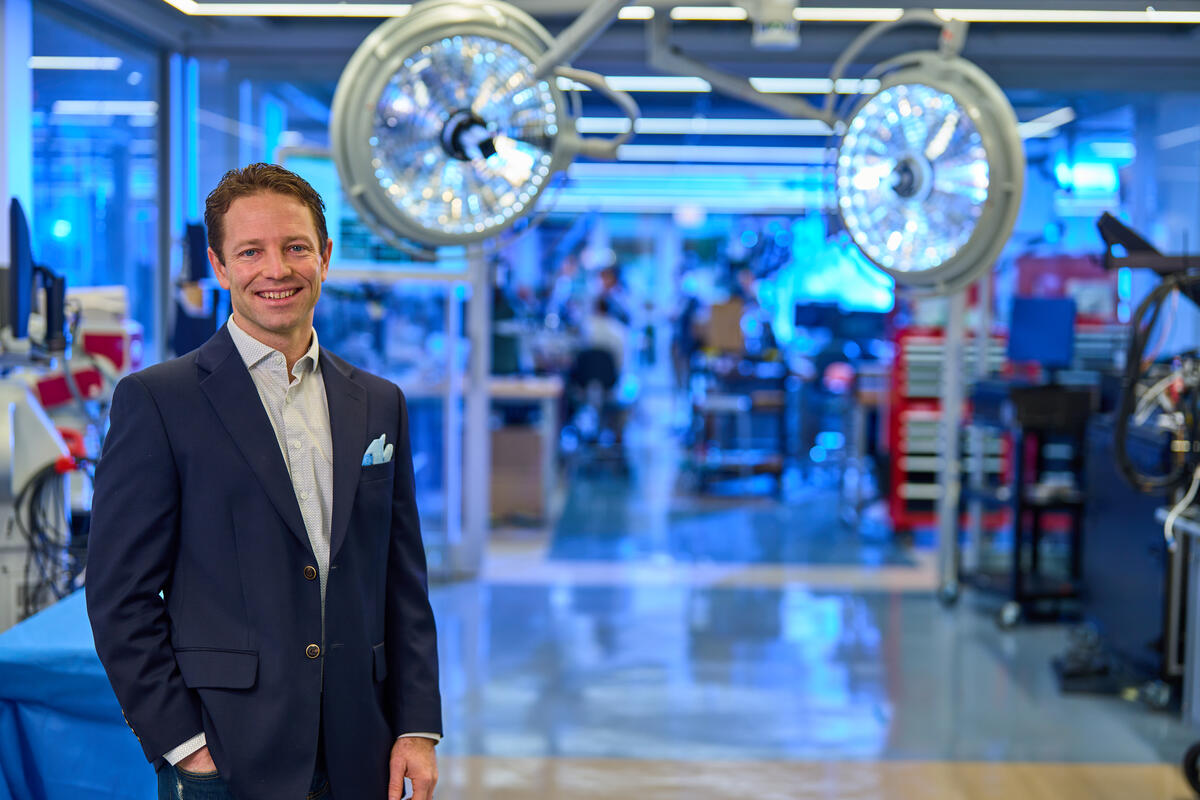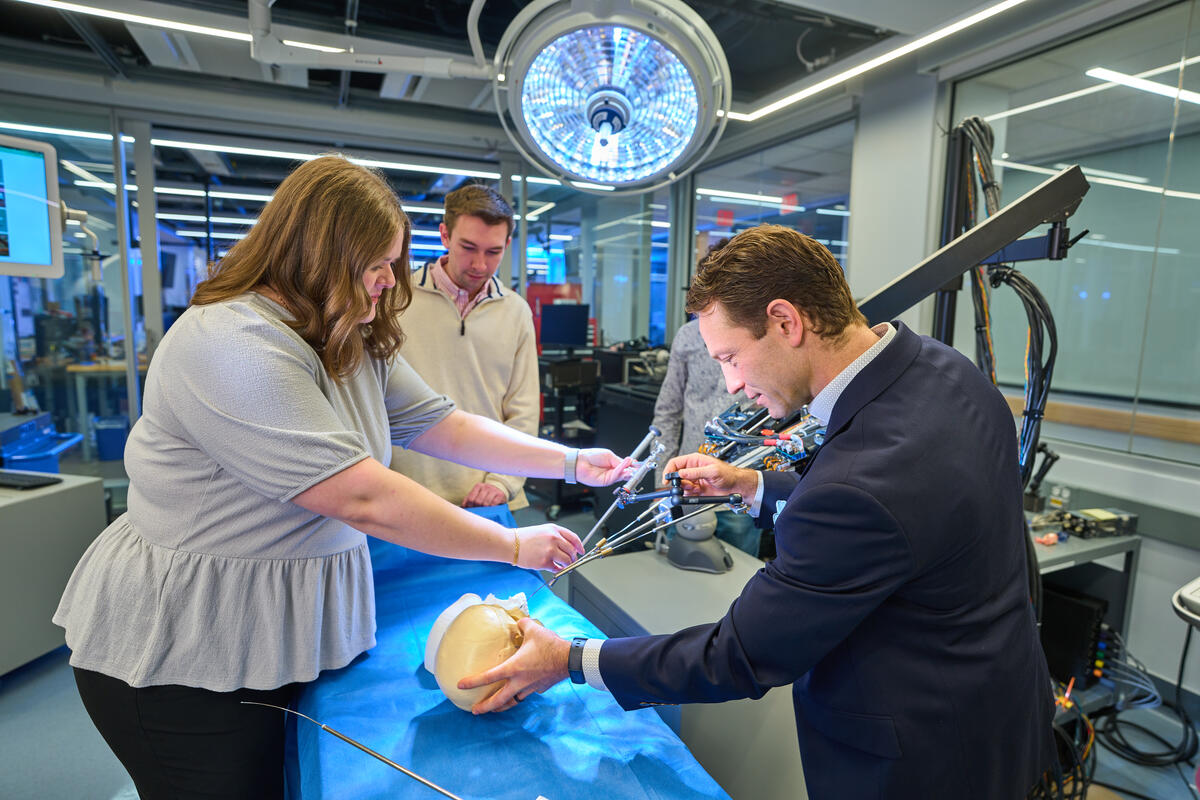By Lucas Johnson
When Robert J. Webster III was working on an engineering project for his Ph.D. at Johns Hopkins University, he was struck with an unnerving thought: The technology he was helping create seemed interesting, but it wouldn’t reach patients for at least 20 years. “And that’s only if everything went well,” he recalls.
So Webster, the Richard A. Schroeder Professor of Mechanical Engineering and associate professor of medicine and urology, began exploring how his robotic designs could have a more immediate impact.

“Then I hit upon trying to make robots so small they could do sinus surgery through a single nostril,” says Webster, who is a co-founder of the Vanderbilt Institute for Surgery and Engineering. “That led me to invent concentric tube robots, and feel really good not only about my Ph.D., but also about launching my faculty career at Vanderbilt with them as a major focus area of my lab.”
In 2016, Webster launched Virtuoso Surgical with his colleague Dr. S. Duke Herrell, professor of urology and director of VUMC’s minimally invasive urologic surgery/robotics program, to commercialize a surgical device using concentric tube technology.
The Virtuoso device has two robotically controlled, needle-sized manipulators that work from the tip of a rigid endoscope that is less than half the diameter of a dime, giving surgeons better control of their instruments during difficult procedures.
Two years later, Webster and Herrell, who also was a co-founder of VISE, helped start another company, EndoTheia Inc., to develop the next generation of medical devices for flexible endoscopy, with the goal of increasing therapeutic efficacy through added flexibility and dexterity.
Patents for the technology were initially filed through Vanderbilt, with both companies licensing the devices through the university.
Webster says part of the enjoyment of working with his companies is seeing the benefits they provide in academia.
“Being a professor and an entrepreneur is a lot of work, but it is nearly all fun work,” says Webster, who serves as president of EndoTheia and Virtuoso. Herrell is chief medical officer for both. “Vanderbilt empowers professors to spend about a day a week consulting. I use this time to provide high-level strategic input to my two startup companies. I am also bringing the lessons back to the classroom, where I teach entrepreneurship in an innovative class that brings together engineering, business and law students to study how to build potentially world-impacting businesses out of Vanderbilt technologies.”
Virtuoso has raised investments totaling more than $13 million and in September 2022 announced a $20 million direct stock offering.
EndoTheia, which focuses on flexible endoscopy and non-robotic devices, has raised nearly $5 million. In January 2023, the company received a breakthrough designation from the U.S. Food and Drug Administration that will streamline the regulatory process.
The company’s primary technology uses thin-walled, laser-machined metallic tubes, enabling the creation of highly flexible, steerable devices that can pass through standard endoscopes while also carrying interventional tools.

EndoTheia’s device can be used across an array of clinical specialties, including urology, gastroenterology, neurology and otology, to vastly improve minimally invasive flexible endoscopic surgery. Webster says the device will particularly benefit ear, nose and throat specialists and is only the seventh device in the ENT category to receive the FDA breakthrough designation.
“EndoTheia’s technology is currently the only viable option to add dexterity to flexible endoscopy, without re-engineering the endoscope itself,” Webster says. “This empowers surgeons to provide much more accurate and precise therapeutic interventions in a wide range of clinical specialties.”
Webster and Herrell say the experimental work they conduct at VISE allows them to “push the envelope” in developing next-generation technology for both companies. This is true across multiple disciplines, they add.
“Broadly speaking, VISE works to make medicine better through engineering of all kinds,” Webster says. “This includes new kinds of medical imaging, medical image analysis, tissue modeling, robotics, use of images to guide interventions and various medical devices.”
The ultimate goal of all his work, he says, is to not just provide physicians with better tools, but to design those tools for specific procedures where lives can be saved.
“There’s no better feeling as an engineer than knowing that you empowered a physician to save a life that otherwise would have been lost,” Webster says. “What surgeons do today with very limited tools continually astonishes me. And imagining the even more incredible things they might do in the future inspires me to invent, mature and ultimately bring to market the innovative new devices we are working on at Virtuoso and EndoTheia.”